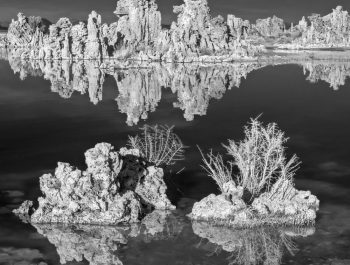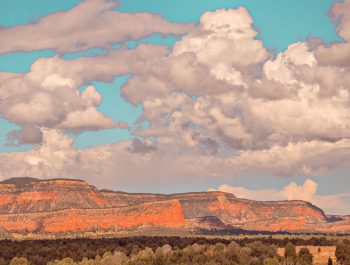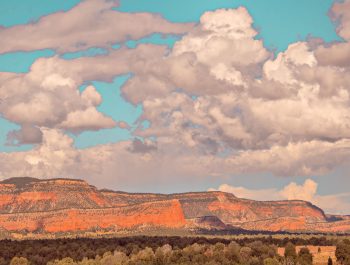Photographic Flexibility
My Current Approach To Landscape Photography
Artists do not discriminate art on the basis of the tools used to create the work.
Alain Briot
It used to be that I would take hours to get to a location, set up my gear and get the shot. Back then, which is not that long ago, I could reach the location at my leisure, carrying a 40 lb. backpack filled with lenses, multiple camera bodies, accessories, batteries, cables, and more. I could take my time setting up my tripod, installing the camera on it, composing the image, trying different lenses, comparing different angles of view, and setting up everything to my heart’s content. I would then wait for the light to be perfect and for the colors to be at their peak. Only then would I take a photograph? In those days, creating a single image took hours. Those were great days, and, on some occasions, they are still part of my photographic life. Unfortunately, on many occasions, those days are far gone and will not return.
Today, which camera gear I use depends on the locations I am photographing. If I go to a remote location that no one knows except me, I can still do what I just described. However, if I go to a location that is well known, this has become impossible. The increase in the number of people doing photography means that many photographic locations now attract an ever-increasing number of photographers. Each year, more and more people are present where I used to be alone.
There are two ways to solve this problem. The first solution is to photograph locations that are only known to me. The second is to photograph locations that are known to other people and be flexible about how I photograph there. The second category is the locations most photographers go to. When I visit these locations, I must accept that I will not be alone. Most of the time, there will be multiple other photographers there at the same time as me. This means I have to be flexible in how I photograph.
Don’t forget, Silver and Gold members can click on any image to see it full size on their monitor.
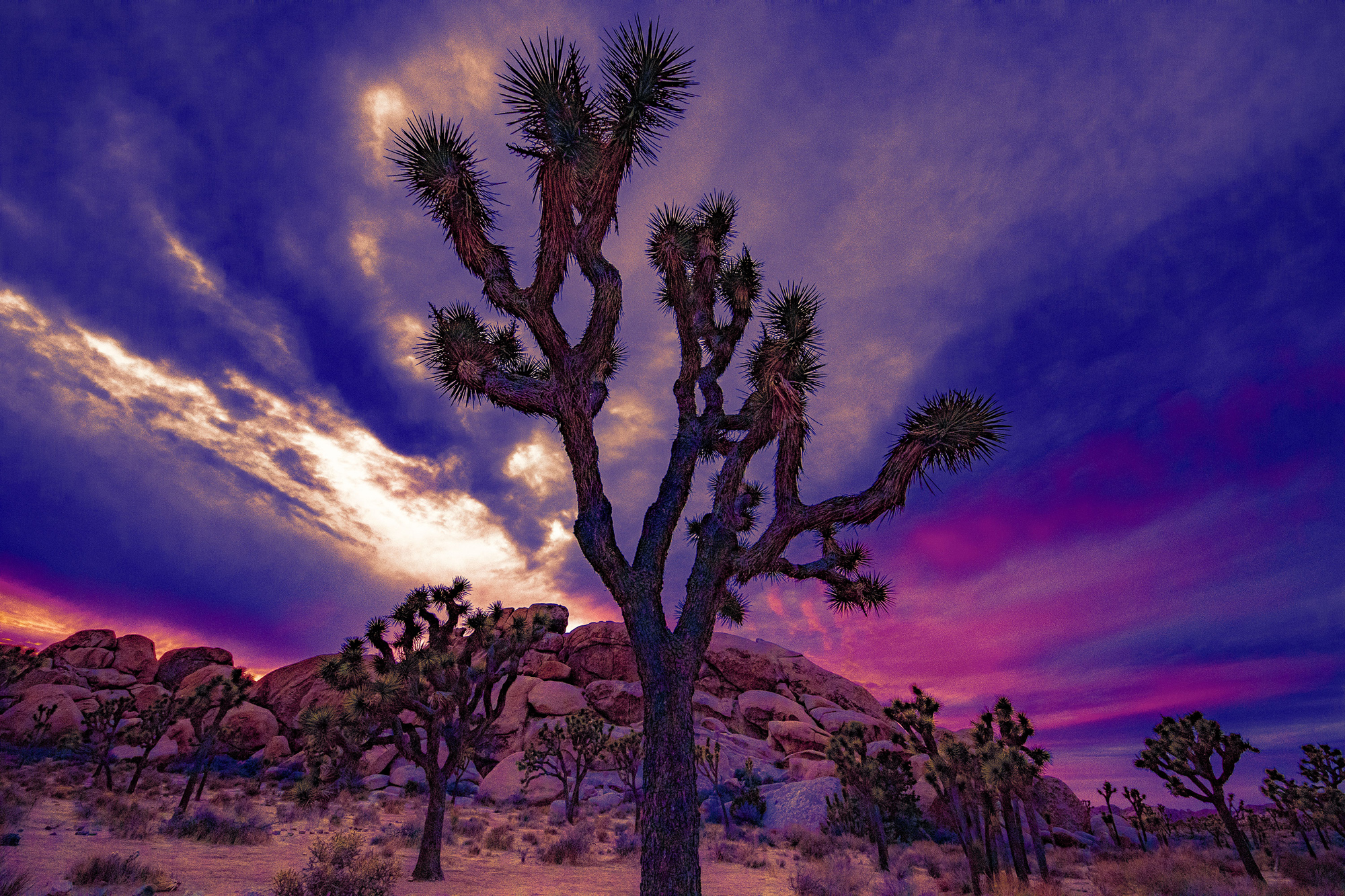
This flexibility addresses four different areas. The first area addresses how I deal with other photographers. I must consider them friends, not foes. They are here for the same reason as me: because we want the shot. In order to get it we have to cooperate, help each other, not be stubborn, not hog a spot, not refuse to move, not be adversarial and not have an attitude.
The second area addresses how I deal with my equipment. It used to be that way back when I only used one camera: a 4×5 view camera. Today I must be comfortable using multiple camera sizes, from large to small, selecting the camera based on convenience. I am not talking about the pixel resolution of these cameras. I am talking about their physical size. Their dimensions. Their weight. The need to use a tripod. In locations where I am alone, I can bring all the gear I want. However, in crowded locations where many other photographers are present, it is impractical to bring a large, heavy backpack filled with lenses, batteries, accessories, and more. It has also become difficult to use a tripod. Crowded places have regulations about how much I can bring to not inconvenience other photographers. In some instances, this means taking a small camera and a small bag for water and snacks and leaving extra lenses, a tripod, and other camera gear in the car or at home.
I also no longer print everything I do in large format. These days a lot of my work is 16×20 or smaller. Also, a lot of my images end up on the web or in PDF publications, where 4×5 to 8×10 inch image size, or its digital equivalent in pixels, is all that is needed. Here too, things have changed.
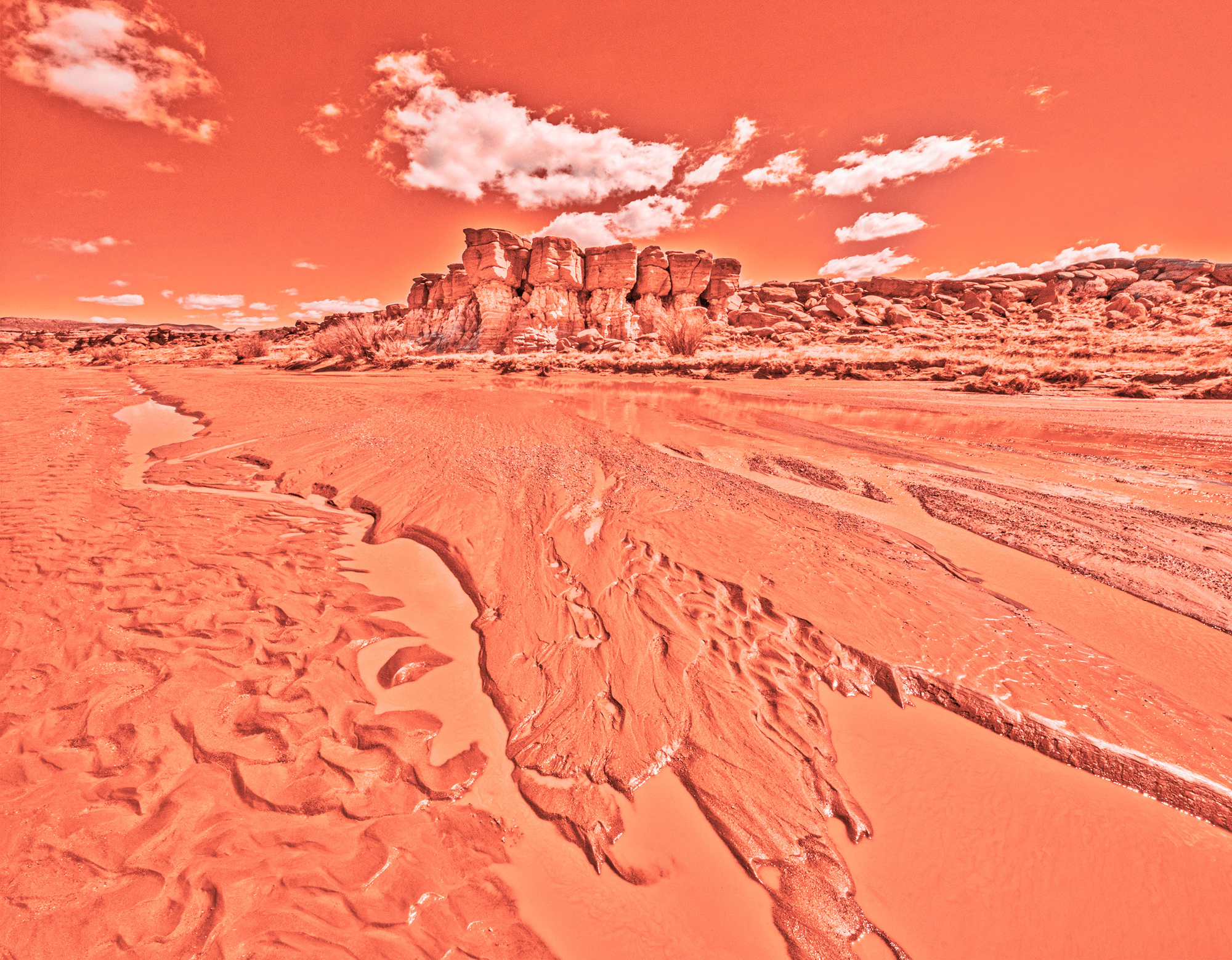
The third area of concern is that I have to accept that current cell phone cameras are capable of creating professional-quality images and prints (see my previous article about the iPhone 13 Pro). My Print of the Month Collection (POTM) features images taken with a variety of cameras from 4×5, to medium format digital, to 35mm, 4/3 format, and iPhone 13 Pro images. The price of the prints in the POTM collection is the same for all images, regardless of which camera was used to take a photograph. A 4×5 photograph is not more valuable than an iPhone 13 Pro photograph, and an iPhone 13 Pro photograph is not less valuable than a 4×5 photograph. Notice I do not say ‘cell phone.’ I say iPhone 13 Pro because I use the name of the camera when I refer to the tool used to create a specific image.
For me, an iPhone 13 Pro, or a more recent iPhone version, is a light, small, portable, and highly capable professional camera. It has super wide, wide and telephoto lenses. It takes excellent photographs in low light. It can capture HDR jpegs or raw files. I can carry it in my pocket. It requires no accessories. What all this boils down to is that I no longer need to carry a backpack full of gear to create a professional image.
The fourth area is processing. In my current approach to digital photography, I spend more time processing my images than I do create images in the field. This is not to say that I spent little time processing before. I did. However, my intent was different. Until a couple of years ago, my approach to digital processing was closer to film processing. I wanted to create aesthetic representations of the landscape. My goal was to create images that were believable, even though the colors were not necessarily realistic. To this end, I optimized colors and contrast while keeping the look of the image believable. My images had to answer two simple questions: Is what the photographs show real? No. Is it believable? Yes.
Today, I am no longer concerned with believability. I am comfortable giving the same answer to both questions: Is what the image shows real? No. Is it believable? No. My intent is no longer to create believable images. My intent is to create images that represent my personal artistic vision of the world, a vision that evolves over time and which is independent of the reality that the camera captures. This means that a third question has emerged: does the image represent my personal artistic vision? And to this question, the answer has to be yes.
The desire for flexibility, which is the subject of this essay, has affected my approach to processing (see my previous essay titled Workflows). In the past, I used a single workflow for all my images. Today I use different workflows depending on my artistic goal for each image. The workflow I use is selected for both technical and artistic reasons. Technical because different cameras record colors and contrast differently and thus call for different workflows to optimize their captures best. Artistic because my aesthetic goals are different for each photograph. For example, an image that calls for deep color, contrast, and compositional transformations is not processed the same way as an image for which I only want to make minor color, contrast, and compositional adjustments.
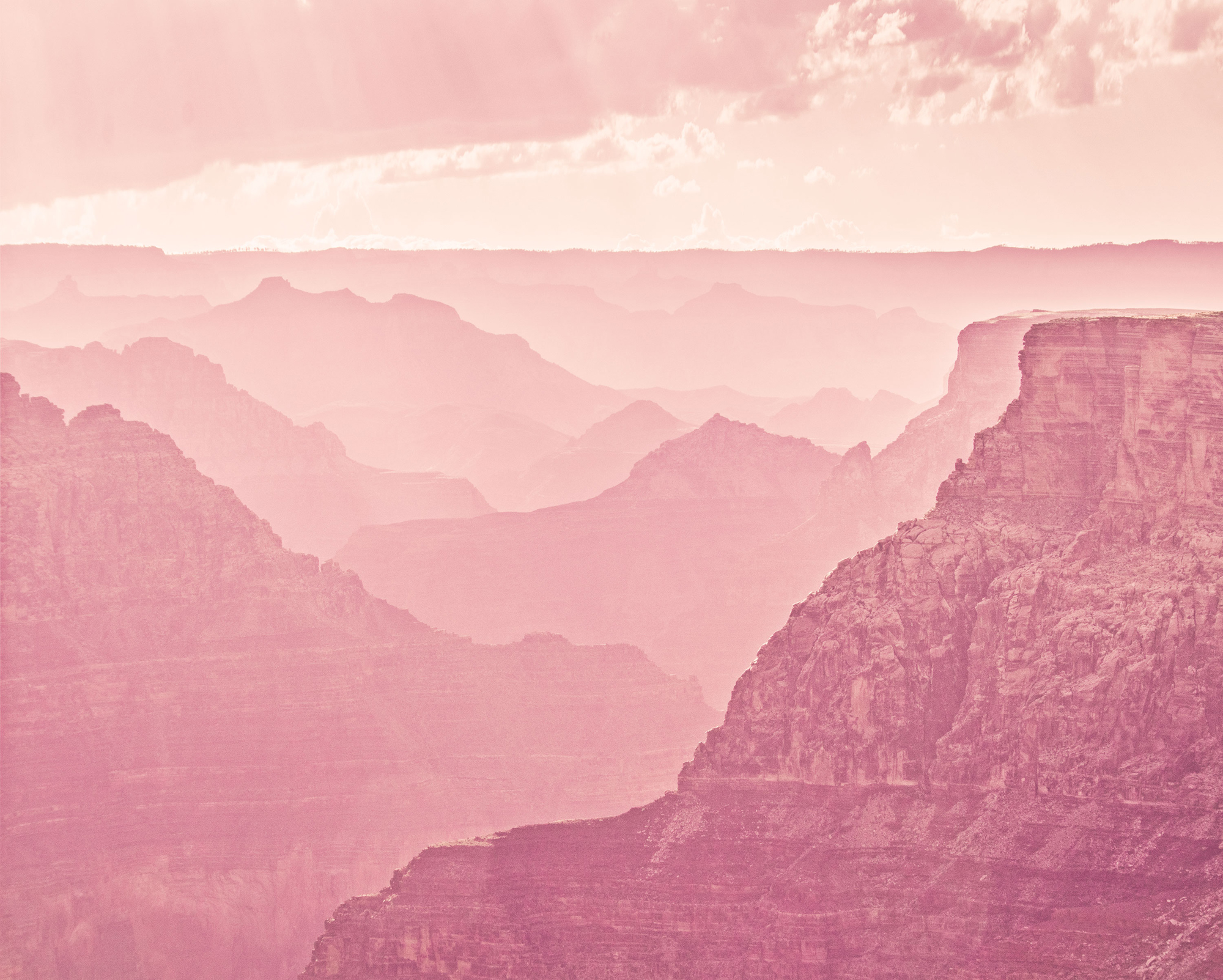
My desire for flexibility has also affected my approach to the landscape. Here is another example: I stopped waiting for the right light, the golden hour, the blue hour, or the perfect time to take every photograph. When I can, I plan to be there at the perfect time, or I wait for the light to be just right. Sometimes I do both. But many times I just capture what is there when I am there. I accept the fact that I cannot be at the perfect time everywhere and that I cannot go back and photograph every place at the perfect time and day of the year.
This means that I stopped looking for perfection. I stopped trying to get the perfect photograph in the perfect light at the perfect time at the perfect location. Instead, I just take the picture when I am there, whenever that is. However, I do not stop there. In the studio, I spend time working on these photographs taken in ‘imperfect light’ and that feature ‘less than ideal’ compositions. I change their colors. I improve on their composition. I add what is missing. I remove what is extra. I work hard. Harder than on the images that were ‘perfect’ in the field. And guess what? These are the ones that get the most noticed; these are the ones that become the most interesting. Not because they are perfect but because they are unlike any other. Their lack of perfection is what motivates me to push them in a new direction. It is what gives me ideas for doing different things. It is what brings me inspiration to create images that are unique. I face a challenge: how to make imperfect images worth the time to look at for my audience. I do my best to deal with this challenge successfully. Not every time, but often. More often than not, in fact.
Today I create images not because they are perfect to start with but because they are perfect for bringing me inspiration. Because they give me a challenge I want to meet. Because they give me not an easy path to success but an opportunity to create something that my audience will find interesting. This approach may take more time, it may be less speedy, but it results in images that are more unique, more me.
You may be ok with all I stated here, or you may want to challenge some or part of it. That is ok with me. Just know that, personally, I favor flexibility in my work. In fact, I see flexibility, photographic flexibility as I call it, as a fundamental aspect of my work. Change is inevitable. Everything changes; therefore, photography changes. I changed with it because I do want to be left behind.
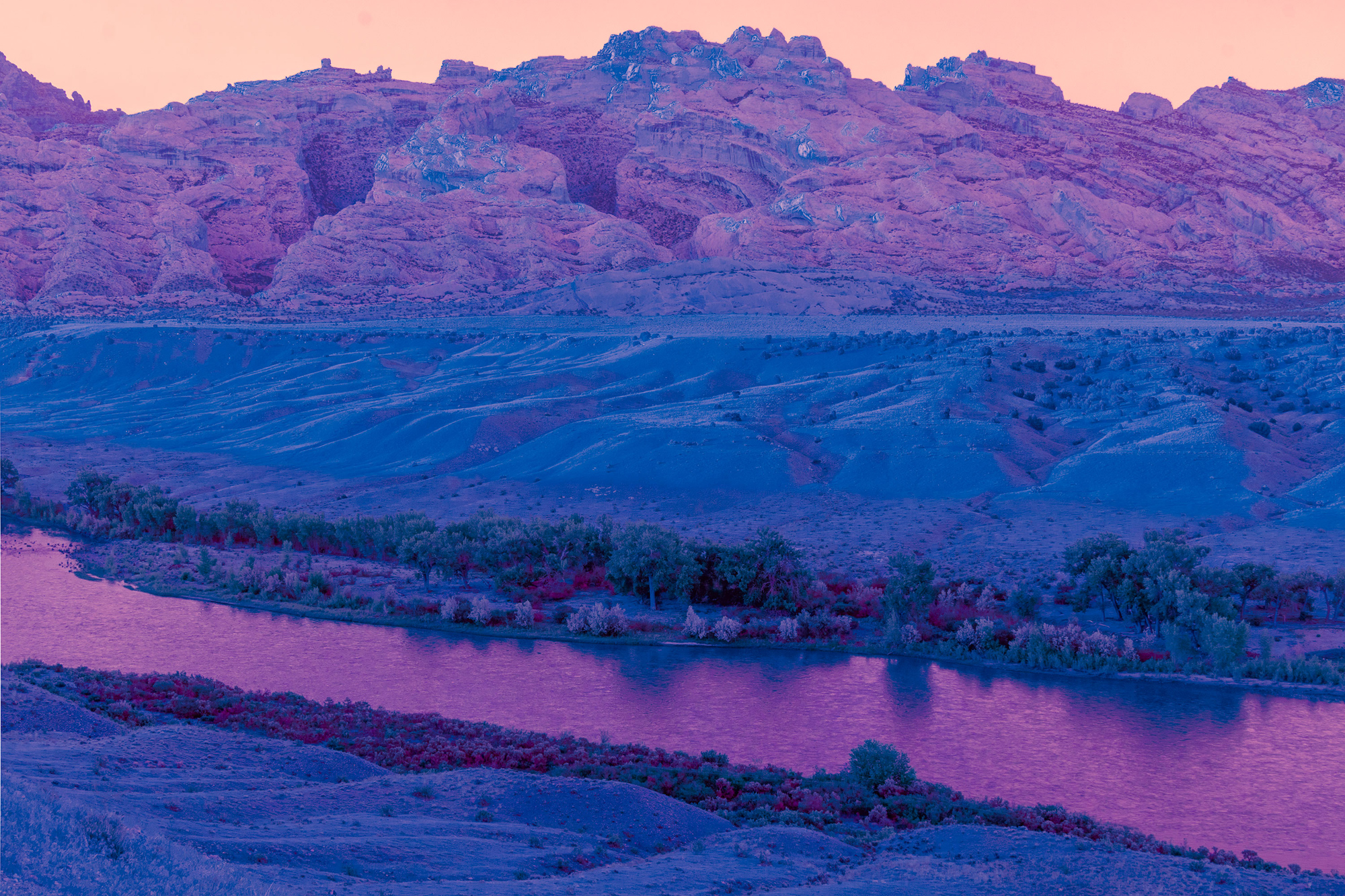
However, change can be challenging. In fact, most people are reluctant to change. But if you do not change, what do you do? Stay behind? Become a photographic dinosaur who must carry a tripod everywhere, and who cannot consider using an iPhone to create a professional photograph? Become someone for whom ‘real’ photographs are taken with a ‘pro’ camera, whatever that means. Discriminate photographs on the basis of the camera used to create them? Argue that fine art can only be created with certain cameras.
These eventualities are unsavory to me. Personally, I like freedom, and the combination of new technologies and a new photographic environment brings me more freedom. I cannot use a heavy camera and carry a backpack full of lenses plus a tripod. Not a problem. I will happily use my iPhone 13 Pro. I love the simplicity, the ease of use and the image quality. I do not particularly enjoy carrying heavy camera gear. I do not see using an iPhone as ‘amateurish’ or as ‘limiting my creativity.’ I see it as freeing me from what once was a cumbersome and rigid medium.
In the end, what I am doing, and what I teach how to do, is creating a digital file from which I will make a print. Which camera I used to take a photograph is unimportant. What I sell, what I show to my audience, is a print, not a digital file or a camera.
My point is simple: I am an artist, and my approach is no different from that of artists working in other mediums. Artists do not discriminate art on the basis of the tools used to create the work. They look at the artwork, not at the tools. For example, painters do not discriminate against paintings on the basis of the paintbrushes, the paint, or the type of canvas the artist used to create their work. Because I teach photography as fine art, I use the same approach. For me, what matters is the photograph, not the camera, the lens, the software, or the other tools used to create it.
About Alain Briot
I create fine art photographs, teach workshops with Natalie and offer Mastery Tutorials on composition, image conversion, optimization, printing, business and marketing. I am the author of Mastering Landscape Photography, Mastering Photographic Composition, Creativity and Personal Style, Marketing Fine Art Photography and How Photographs are Sold. All 4 books are available in eBook format on our website at this link. Free samplers are available.
You can find more information about our workshops, photographs, writings and tutorials as well as subscribe to our Free Monthly Newsletter on our website at http://www.beautiful-landscape.com. You will receive 40 free eBooks when you subscribe.
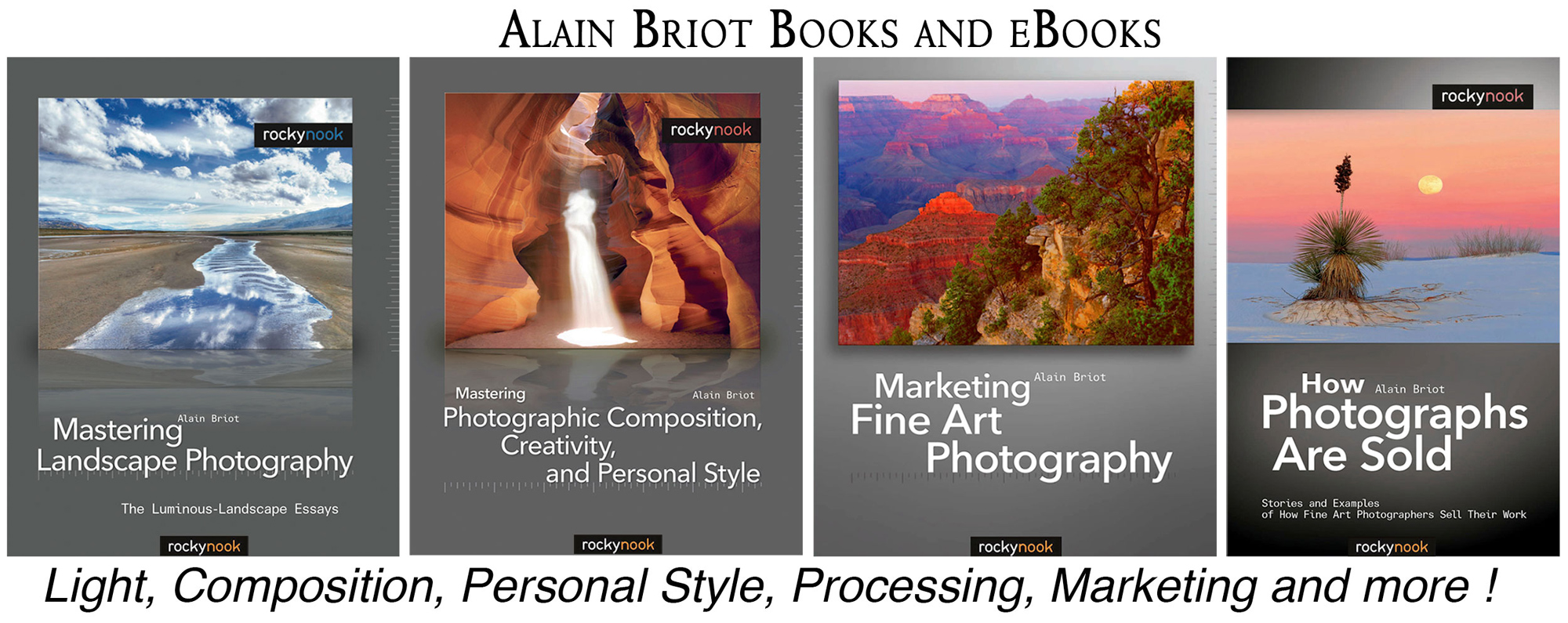
Studying Fine Art Photography With Alain and Natalie Briot
If you enjoyed this essay, you will enjoy attending a workshop with us. I lead workshops with my wife Natalie to the most photogenic locations in the US Southwest. Our workshops focus on the artistic aspects of photography. While we do teach technique, we do so for the purpose of creating artistic photographs. Our goal is to help you create photographs that you will be proud of and that will be unique to you. The locations we photograph include Navajoland, Antelope Canyon, Monument Valley, Zion, the Grand Canyon and many others. Our workshops listing is available HERE.
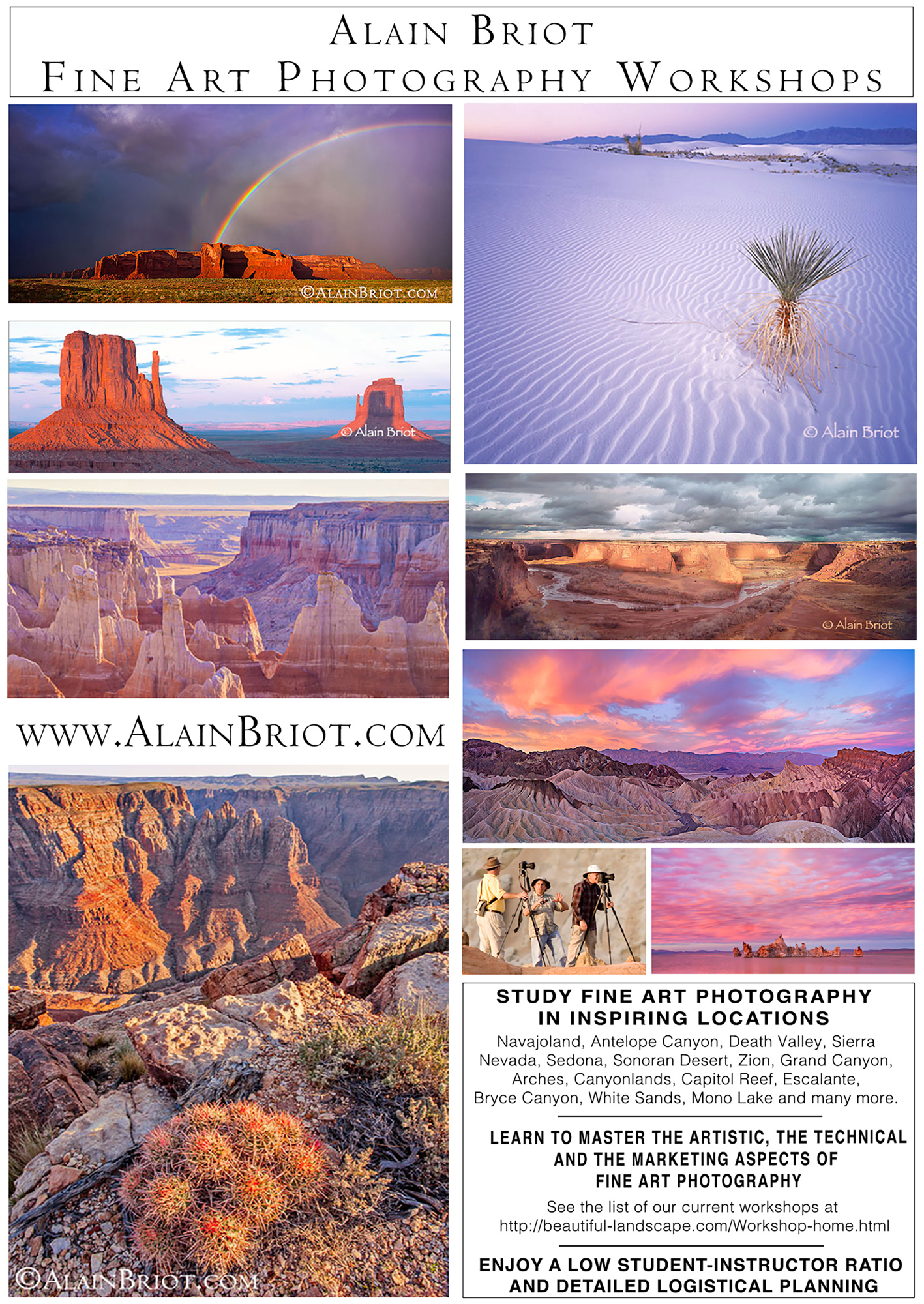
Alain Briot
March 2023
Glendale, Arizona
Author of Mastering Landscape Photography,Mastering Composition, Creativity and Personal Style, Marketing Fine Art Photography, and How Photographs are Sold. http://www.beautiful-landscape.com [email protected]






